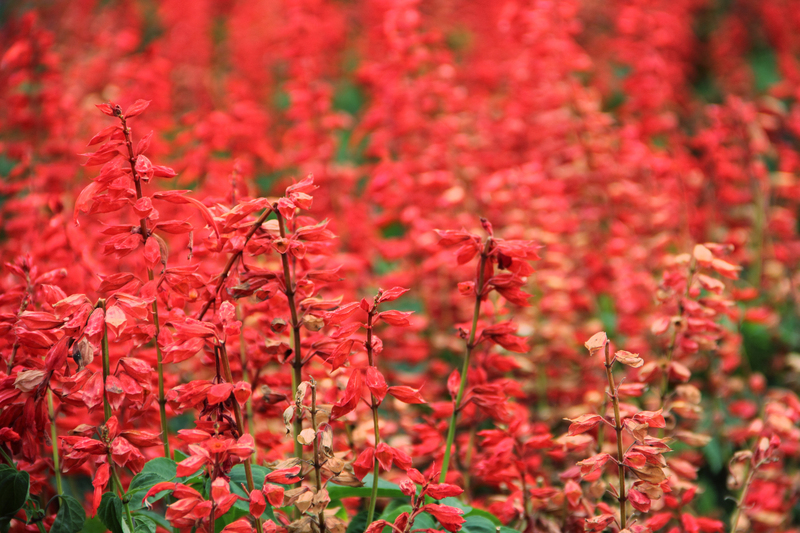Mastering Yard Care: Beginner Secrets to a Healthier, Greener Lawn
Do you dream of a lush, green lawn that stands out in your neighborhood? Achieving a vibrant lawn may seem challenging for beginners, but with a little knowledge and the right approach, anyone can transform their yard. In this comprehensive guide, we'll share proven yard care secrets that will help you cultivate a healthy, verdant lawn--no matter your starting point.
Why Effective Lawn Care Matters
Lawn care isn't just about aesthetics. A well-cared-for lawn improves your home's curb appeal, provides a play area for family and pets, absorbs rainfall, and supports local wildlife. Mastering the art of lawn maintenance can even increase your property value.

Understanding Your Lawn: Types, Soil, and Climate
Know Your Grass Type
Before embarking on a yard care journey, identify what type of grass you have. Common varieties in North America include:
- Kentucky Bluegrass
- Bermuda Grass
- Fescue
- St. Augustine
- Ryegrass
Matching your grass care techniques to the specific variety ensures better results and a more resilient lawn.
Test and Improve Your Soil
Healthy lawns begin with good soil. Start with a soil test (available at most garden centers) to determine pH and nutritional levels.
- pH Range: Ideal lawns need a pH of 6.0-7.0.
- Nutrients: Nitrogen, phosphorus, and potassium are essential for healthy grass growth.
Tip: Amend your soil with lime to raise pH, or with sulfur to lower it. Use organic compost to improve texture, moisture retention, and nutrition.
Mowing Secrets for a Greener Yard
Set the Right Mowing Height
Cutting grass too short weakens roots and leads to a patchy, unhealthy appearance. Each grass type has an optimal mowing height:
- Kentucky Bluegrass & Fescue: 2.5-3.5 inches
- Bermuda Grass: 1-2 inches
- St. Augustine: 2.5-4 inches
Keep Blades Sharp
Sharp mower blades produce clean cuts, reducing the risk of disease and brown tips. Check and sharpen blades every month during the growing season.
Follow the One-Third Rule
Never remove more than one-third of the grass blade in a single mowing. This yard care secret encourages deep root growth and prevents stress.
Watering Wisdom: How to Hydrate for Health
Water Deeply and Infrequently
Frequent, shallow watering encourages weak, surface roots. For a truly vibrant green lawn:
- Water 1-1.5 inches per week, including rainfall.
- Water early in the morning to reduce evaporation and fungal diseases.
Check for Proper Drainage
Pooling water may indicate compacted soil or poor grading. Aerate heavy soils annually and fill depressions to prevent waterlogging.
Fertilization Techniques for Luxuriant Growth
Understand Fertilizer Labels
All fertilizers are labeled with three numbers, indicating the percentages of nitrogen (N), phosphorus (P), and potassium (K). For most lawns:
- Nitrogen boosts green growth
- Phosphorus supports root development
- Potassium improves drought and disease resistance
Apply at the Right Time
Fertilize according to your grass type:
- Cool-season grasses: Feed in early spring and fall.
- Warm-season grasses: Feed in late spring and summer.
Choose Organic or Synthetic Fertilizer
Both types have their merits:
- Organic fertilizers feed soil microbes and improve long-term health.
- Synthetic fertilizers deliver immediate green-up but require careful application to avoid burn.
Aeration and Overseeding: Secrets for a Denser Lawn
Why Aeration Matters
Over time, foot traffic and rainfall compact lawn soil, choking roots and reducing oxygen flow. Aeration--removing small plugs of soil--relieves compaction and stimulates deep root growth.
- Aerate once a year (preferably in fall for cool-season grass or spring for warm-season grass).
- Rent a core aerator from a garden center, or hire a professional.
The Power of Overseeding
After aeration, spread new seed over the lawn, especially in thin or bare patches. This practice, known as overseeding, thickens your turf and inhibits weeds.
- Choose a seed blend that matches your existing grass type.
- Keep soil moist for 2-3 weeks after seeding.
Weed and Pest Management: Defending Your Green Lawn
Natural vs. Chemical Weed Control
A healthy, thick lawn is the best defense against weeds. If weeds appear:
- Hand-pull or spot-treat minor infestations.
- Apply pre-emergent herbicide in spring to prevent crabgrass.
- Target broadleaf weeds with selective herbicides or organic alternatives like corn gluten meal.
Identifying and Managing Lawn Pests
- Look for discoloration, thinning, or chewed blades as signs of pest activity.
- Common pests include grubs, chinch bugs, and sod webworms.
- Use natural predators (like birds or nematodes), or spot-treat with approved insecticides.
Pro Tip: Diagnose issues before spraying--sometimes poor lawn care, not pests, causes browning!
Seasonal Care and Year-Round Lawn Maintenance
Spring: Awakening Your Lawn
- Rake winter debris, aerate, and lightly fertilize.
- Overseed thin spots after the soil warms.
- Sharpen mower blades and check irrigation systems.
Summer: Growing and Protecting
- Mow high to shade roots.
- Water deeply in the early morning.
- Watch for weeds, grubs, and drought stress.
Autumn: Building Resilience
- Aerate, overseed, and consider a fall fertilizer application.
- Rake leaves promptly to reduce mold and smothering.
- Reduce mowing frequency as growth slows.
Winter: Prepping for Next Season
- Minimize traffic on frozen turf to prevent damage.
- Service lawn equipment and plan spring projects.
Beginner Mistakes to Avoid
- Overwatering or underwatering
- Mowing too short or infrequently
- Skipping soil testing
- Ignoring pests or disease symptoms
- Using the wrong fertilizer
Avoid these pitfalls, and you're well on your way to mastering lawn care.
Essential Tools for Every Lawn Enthusiast
- Lawn mower (push or riding, with adjustable blades)
- Sprinkler or soaker hose for even watering
- Rake and leaf blower
- Soil test kits
- Fertilizer spreader
- Hand weeder and pruners
- Garden gloves
With these essentials, tackling yard tasks becomes much easier and more enjoyable.

Eco-Friendly Lawn Care Ideas
Modern homeowners increasingly seek sustainable, eco-friendly approaches to achieving a green, healthy lawn:
- Mulch grass clippings to recycle nutrients.
- Limit pesticide and synthetic fertilizer use.
- Add native plants or pollinator borders to support biodiversity.
- Collect rainwater for irrigation.
- Install a smart sprinkler system to reduce water waste.
Conclusion: Start Your Journey to a Lush Green Lawn
Mastering yard care as a beginner doesn't require a green thumb--just a willingness to learn. By understanding your grass and soil, following seasonal maintenance routines, and adopting healthy habits, you can transform any dull patch of grass into a vibrant, green oasis.
Remember: Consistency and attention to detail are your biggest allies! Follow these proven strategies, dodge common mistakes, and enjoy the countless rewards of a beautiful, resilient lawn.